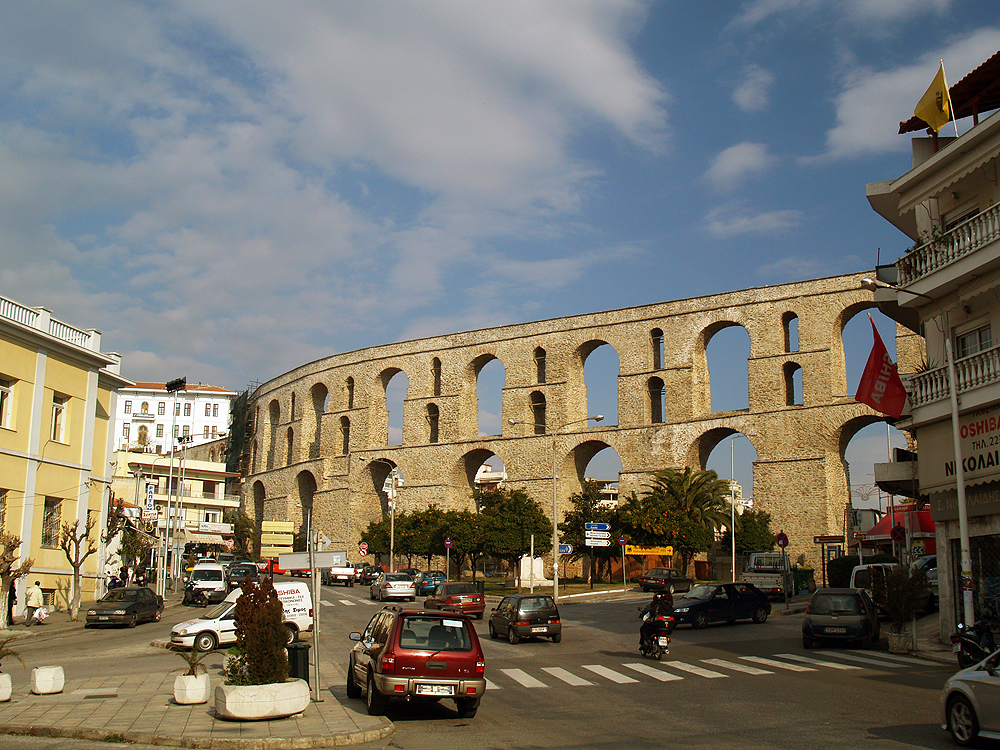 | ||
The Kavala aqueduct, popularly known as the Kamares (Greek: Καμάρες, "arches"), is a well-preserved aqueduct in the city of Kavala, Greece, and is one of the city's landmarks.
While the aqueduct is "probably of Roman origin", the present structure dates to the 16th century. A Byzantine barrier wall of the early 14th century, built as part of the fortifications on the Kavala acropolis, probably also functioned as an aqueduct. If so, it would have been a rare example of a Byzantine aqueduct, since Byzantine cities more typically used wells and cisterns rather than either maintaining existing Roman aqueducts or building new ones. The barrier wall was replaced with the present arched aqueduct during Suleiman the Magnificent's repair and improvement of the Byzantine fortifications. Some authors date that construction to the time of the 1522 Siege of Rhodes, but a more likely date is between 1530 and 1536. As late as 1911, it was still being used to supply the city with drinking water from Mount Pangaeus.
